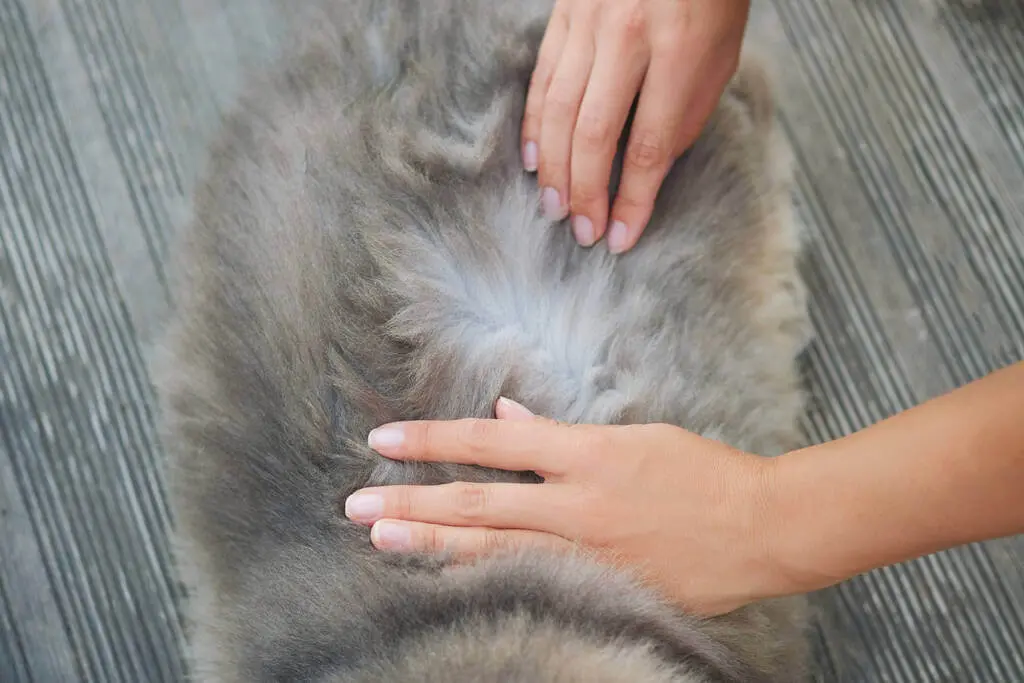What are Fleas?
Fleas are tiny bloodsucking insects and they’re a common nuisance for pet owners, especially during the warm summer months when infestations are more likely to occur.
Fleas have a life cycle consisting of four stages: eggs, larvae, pupae, and adults. The adult flea is the most visible stage, but it’s the eggs and larvae that pose the most significant threat. Flea eggs can be found all over your home, including in carpets, bedding, and furniture. These tiny eggs hatch into larvae, which then develop into pupae and eventually emerge as adult fleas.
It’s important to be aware of the health risks associated with pet fleas as they can cause a range of problems, including flea allergy dermatitis, severe skin irritation, and in some cases, even transmit deadly diseases. Flea prevention, such as regular use of flea prevention medication, is a crucial part of keeping your pets safe and healthy.
Pet Owner Responsibility
As a pet owner, the health and well-being of your furry companion should be your utmost priority. Responsible pet ownership encompasses various aspects, including providing a safe and loving environment, regular veterinary care, nutritious food, and proper preventive measures. One important preventive measure that should not be overlooked is protecting your pet from flea infestations and the hidden health risks they pose.
In addition to being a nuisance, fleas can also be a health hazard for both your pet and your home. They have the ability to infest your pet’s fur, laying eggs that develop into larvae and eventually mature into adult fleas.
Beyond the acute pain and severe skin irritation caused by flea bites, your pet may experience allergic reactions such as flea allergy dermatitis. Moreover, fleas can transmit deadly diseases and serve as a source of anxiety and stress in pets.
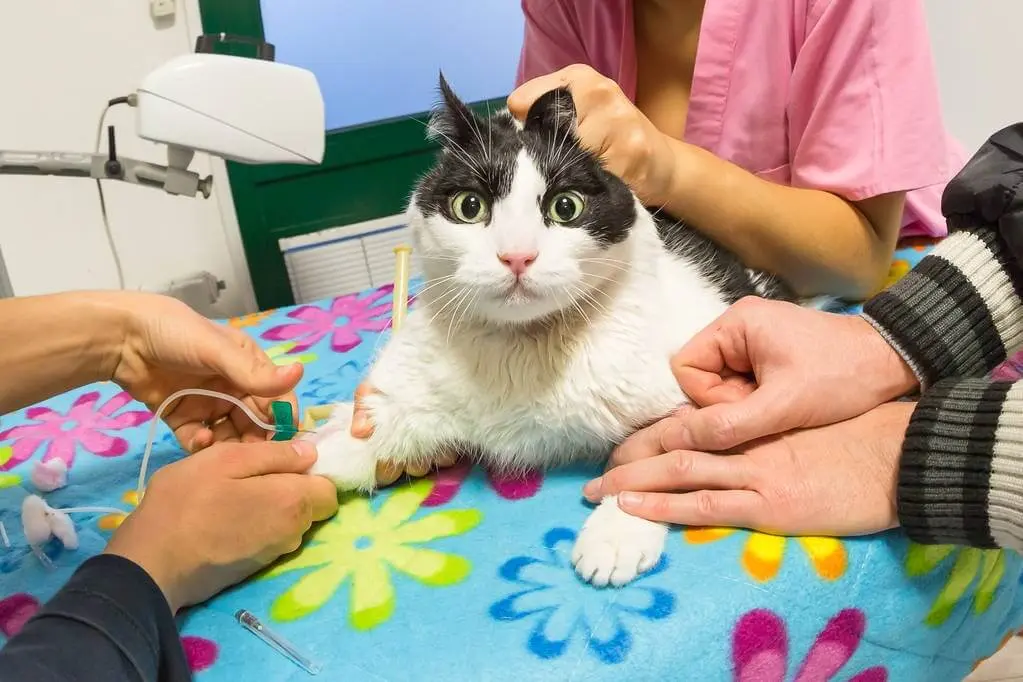
To safeguard your beloved companion, it is crucial to invest in flea prevention medications recommended by your veterinarian. These medications are designed to disrupt the flea life cycle, preventing infestations before they start. Regular use of these preventive products is essential, especially during warm summer days and the school season when fleas are most active.
Being aware of the common signs of fleas is also important. Watch out for excessive scratching, biting, or licking, as well as the presence of tiny black specks, known as flea dirt, in your pet’s fur or bedding. Fleas may also infest your home, hiding in carpets, furniture, and other nooks and crannies.
Flea Life Cycle
Fleas are persistent pests that can cause a range of health issues for both pets and humans. Flea eggs are laid on the host animal but easily fall off into the environment, where they hatch into larvae.
These larvae feed on organic material, molt, and eventually spin cocoons to enter the pupal stage. After a period of time, adult fleas emerge from the cocoons and begin searching for a host animal to feed on.
Understanding the flea life cycle can help pet owners address infestations effectively by targeting all stages of the fleas’ development.
Adult Fleas
Adult fleas are small, wingless insects that infest various warm-blooded animals, including dogs, cats, and even humans. These resilient parasites are highly skilled at jumping and can easily move from one host to another.
Adult fleas prefer to feed on the blood of their hosts, and their bites can cause severe skin irritation and allergic reactions such as flea allergy dermatitis. In addition to the discomfort they cause, adult fleas can also transmit diseases like tapeworms and bartonellosis.
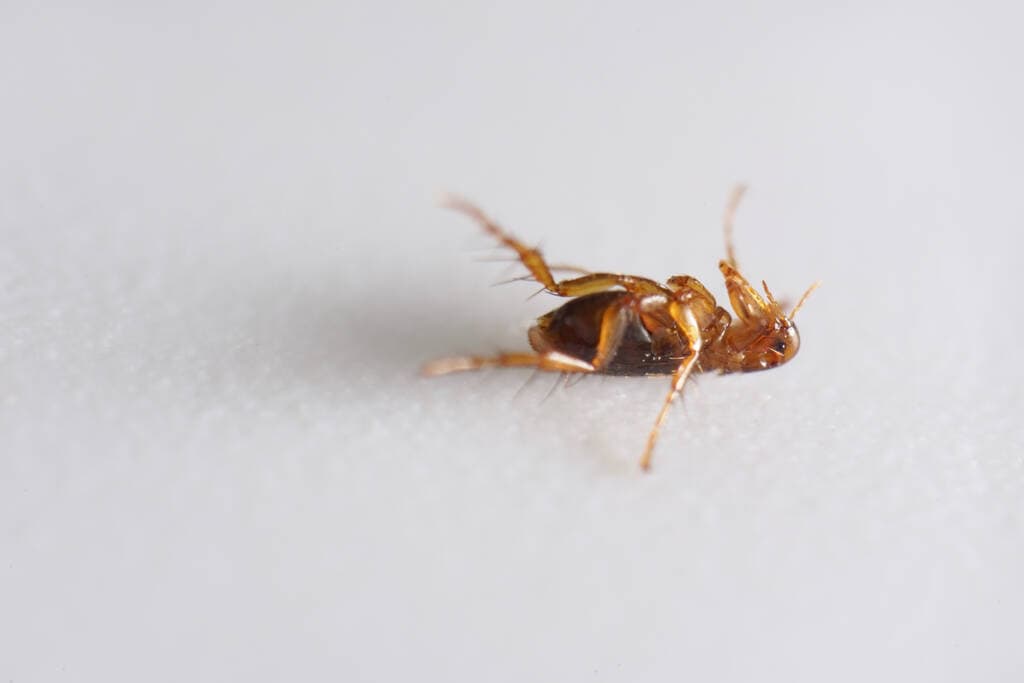
To effectively control fleas, it is crucial to treat your pets with the appropriate flea prevention medication. Prescription or over-the-counter products containing active ingredients like fipronil, imidacloprid, or lufenuron are commonly recommended. These medications disrupt the flea life cycle by killing adult fleas and preventing the development of flea eggs and larvae.
To ensure proper application and avoid any adverse effects, it is advisable to consult a veterinarian before using any flea treatment products. Veterinarians can provide guidance on the most suitable treatment options and offer advice on preventing flea infestations.
Flea Eggs
Flea eggs play a significant role in the life cycle of fleas, and understanding their development is crucial in preventing infestations and protecting the health of our pets and environment. After a blood meal, adult fleas lay eggs on their host, which then easily fall off onto various surfaces.
These tiny, oval-shaped eggs are barely visible to the naked eye, making them difficult to detect. They are often hidden in carpets, bedding, and cracks in the floor, creating a perfect environment for their development.
Once the eggs hatch, they give rise to flea larvae. These worm-like larvae are also challenging to spot as they tend to hide in dark, undisturbed areas like the base of carpet fibers or in between floorboards.
The presence of flea eggs and larvae poses numerous challenges in removing them. Vacuuming alone may not be enough to eliminate them completely, as they can adhere to surfaces and resist removal. Additionally, flea eggs can remain dormant for extended periods, making it difficult to eradicate an infestation entirely.

To effectively combat flea infestations, it is crucial to not only address adult fleas but also focus on eliminating the eggs and larvae. Regular vacuuming, washing bedding in hot water, and using flea control products specifically formulated to target eggs and larvae are essential steps in preventing the development and spread of fleas in our homes.
Larvae and Pupae Stages
In order to fully understand and combat flea infestations, it is important to be knowledgeable about the various life stages of fleas. After the eggs hatch, flea larvae emerge. These tiny, white, worm-like creatures feed on organic debris and flea feces in the environment. They tend to hide in dark and undisturbed areas, such as the base of carpet fibers and in between floorboards, making them difficult to spot.
Flea larvae undergo molting several times as they grow, eventually spinning a cocoon and entering the pupae stage. During this stage, they are encased in a protective casing, and the adult flea develops inside. The pupae stage is particularly troublesome as it can last for weeks or even months, allowing the fleas to survive in the environment even when there are no adult fleas present.
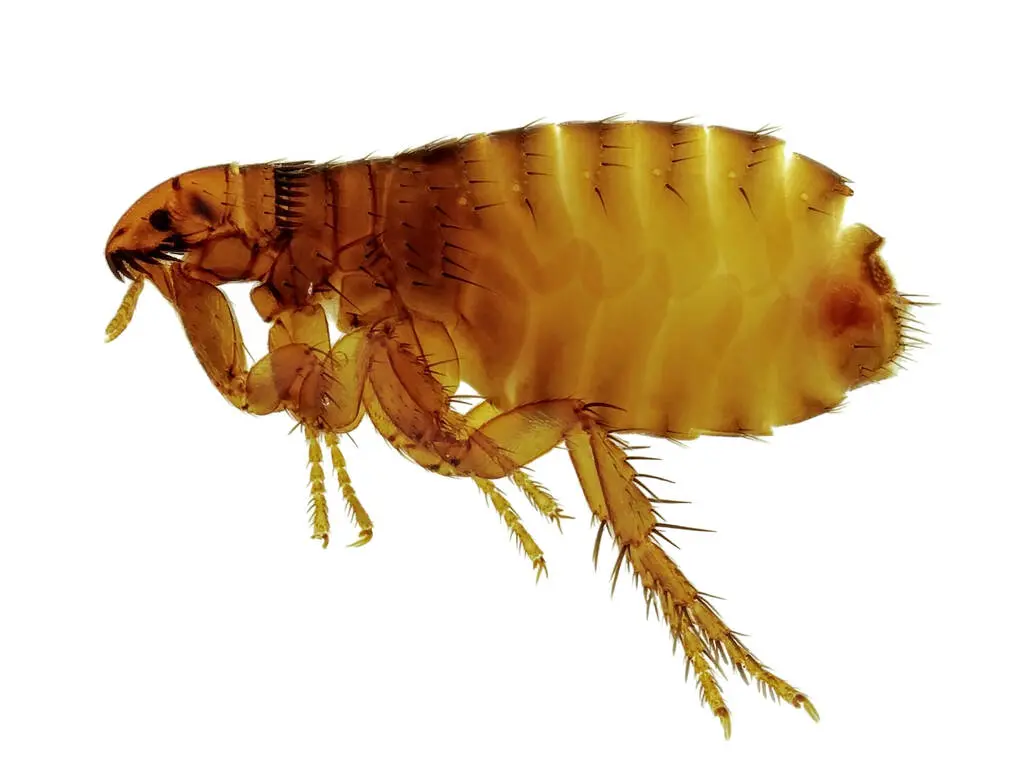
Identifying the larvae and pupae stages of fleas on pets can be challenging. Flea larvae can often be found in the pet’s bedding, especially if it is located in a warm and humid area. They can also hide in carpets, rugs, and other soft furnishings, making these places prime breeding grounds for fleas.
Thorough grooming and combing of pets can help in detecting and removing flea larvae and pupae. A fine-toothed flea comb can be used to comb through the pet’s fur and collect any loose larvae or pupae. Regular vacuuming of carpets and soft furnishings is also crucial in eliminating these life stages from the environment.
To effectively control flea infestations, it is essential to address all stages of the flea life cycle, including the larvae and pupae. By understanding these hidden stages and diligently implementing grooming, combing, vacuuming, and flea control measures, pet owners can combat flea infestations and protect the health of their beloved companions.
Signs of a Flea Infestation in Your Home or on Pets
One of the unmistakable signs of a flea infestation is the presence of adult fleas on your pet’s fur or within your home. These small insects are often noticeable as they jump or move about.
Common Signs of Fleas on Pets
One of the most obvious signs of fleas is the presence of insect bites on your pet. Fleas leave itchy, red bumps on the skin, often concentrated around the neck, tail, and belly. If you notice your pet constantly scratching or biting at these areas, it may be a clear indication of a flea infestation.
In addition to excessive scratching, fleas can cause other visible symptoms on your pet. Look out for bald or sore patches on their skin, as repeated scratching and biting can lead to hair loss or open sores. Flea saliva can also cause the skin to thicken, resulting in a rough and uneven texture.

As we’ve discussed, another tell-tale sign of fleas is the presence of tiny dark specks in your pet’s fur. These specks are flea droppings, which consist of digested blood. To check for fleas or their droppings, try running a fine-tooth comb through your pet’s fur while holding it over a white surface, such as a kitchen towel. If you see black or brown specks falling onto the surface, it is likely your pet has fleas.
If you observe any of these signs, it is essential to take action promptly. Fleas can cause a range of health issues for pets, including flea allergy dermatitis, an allergic reaction to flea saliva that results in severe skin irritation. Fleas can also transmit deadly diseases to both pets and humans. To prevent flea infestations and keep your pet safe, consult with your veterinarian about the appropriate flea prevention medication and follow the recommended flea control practices.
Allergic Reactions to Flea Bites
Allergic reactions to flea bites can range from mild irritation to severe discomfort for pets. When a flea bites, it injects saliva into the skin, which can trigger an allergic response in some animals.
Symptoms of flea bite allergies often include swollen and itchy skin. Pets may experience red bumps, hives, or rashes around the bite area. These reactions can be particularly bothersome for pets, causing them to constantly scratch and bite at the affected areas.
In more severe cases, flea bite allergies can lead to a condition called flea allergy dermatitis. This is a hypersensitivity reaction to the flea saliva that results in intense itching and inflamed skin. The constant scratching can cause skin infections and worsen the symptoms. In addition to skin issues, some pets may also experience respiratory complications, such as difficulty breathing or wheezing.
It is important for pet owners to recognize the signs of allergic reactions to flea bites and seek medical attention when necessary. In some instances, oral or topical medications may be prescribed to alleviate itching and reduce inflammation. It is also crucial to ensure a flea prevention regimen is in place to prevent future infestations and minimize the risk of allergic reactions.
Other Physical Health Issues Related to Fleas
In addition to causing allergic reactions, flea bites can pose various physical health risks to both pets and humans. One of the main concerns is the potential for these bites to become infected. The constant itching and scratching can break the skin, creating an entry point for bacteria. This can lead to secondary infections that require medical treatment.
Fleas are notorious for aggravating skin complaints. If an individual already has a pre-existing skin condition such as eczema or dermatitis, flea bites can further worsen the symptoms. The constant irritation and inflammation from the bites can cause the skin to become red, swollen, and extremely itchy. Scratching at these areas can result in open sores and increase the risk of infection.
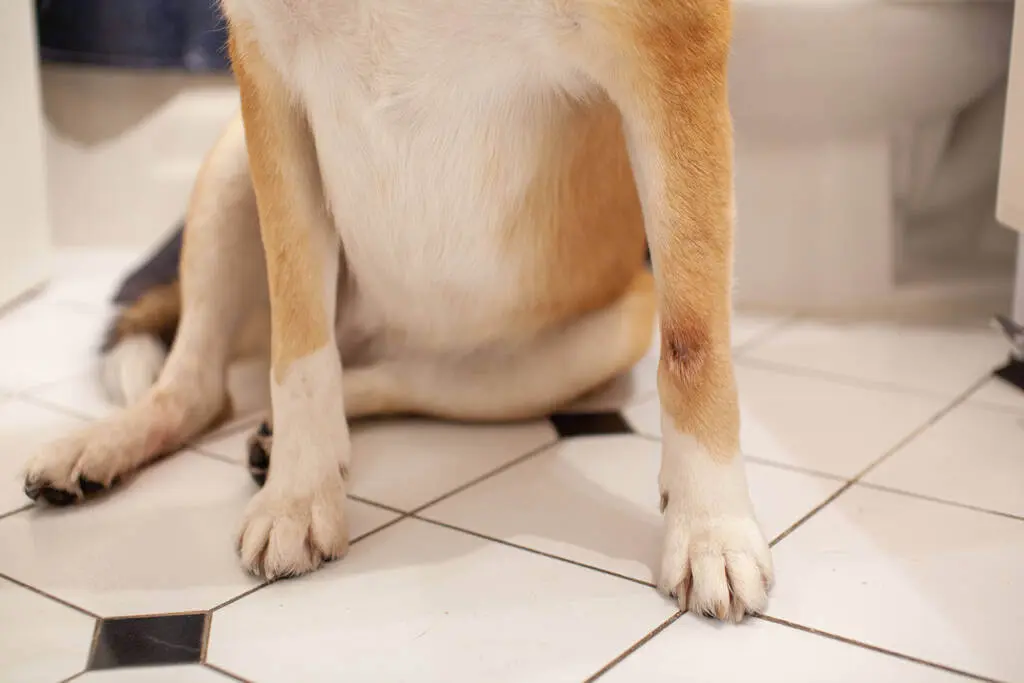
Beyond skin issues, fleas can also contribute to respiratory illnesses. When fleas infest the home and multiply, they release feces and shed skin fragments that can become airborne. These particles can be inhaled, triggering respiratory symptoms such as coughing, wheezing, and difficulty breathing. It is especially problematic for individuals with asthma or other respiratory conditions.
Moreover, fleas are known carriers of various diseases that can be transmitted to humans. Some examples include murine typhus, bubonic plague, and cat scratch disease. While these diseases are relatively rare, the potential risk underscores the importance of preventing and addressing flea infestations promptly.
The Benefits of Using Prevention Medications for Pets During Summer Months
Using prevention medications for pets during the summer months is crucial for their health and well-being. During warmer weather, there is a rise in flea activity which can lead to infestations. Fleas can cause discomfort for pets and also have various health implications.
By proactively administering preventive medications, pet owners can protect their furry friends from flea infestations and the accompanying physical and emotional distress.
Prevention medications work by targeting adult fleas, flea eggs, and larvae, interrupting their life cycle and preventing further infestations. This not only helps to keep pets safe from flea-related diseases but also reduces the risk of allergic reactions, such as flea allergy dermatitis.
As the days of summer bring warmth, thunderstorms, and excitement, ensuring our pets are protected with prevention medications becomes a vital part of responsible pet care.
Warm Weather Brings an Increase in Activity for Fleas
The combination of heat and humidity during the summer months creates ideal conditions for the flea life cycle to thrive. Flea eggs, larvae, and adults thrive in warm and moist environments, multiplying at an alarming rate. This means that even a single flea can quickly turn into a full-blown infestation if not addressed in a timely manner.
The increased outdoor activity of pets during warm weather exposes them to a greater risk of encountering fleas. Whether it’s playtime at the park, walks in the neighborhood, or hikes in the countryside, our furry friends can easily come into contact with fleas lurking in grassy areas or on other animals they meet along the way.
Thunderstorms are a Perfect Time to Use Prevention Medication
When thunderstorms roll in during the summer months, it’s not just the loud noises and bright flashes that we need to worry about. Thunderstorms can create the perfect environment for fleas to thrive and reproduce on our pets. The increased moisture and humidity during these storms accelerate the flea life cycle, making it even more important to take steps to protect our furry friends.

These tiny pests can cause severe itching, scratching, and discomfort. Flea bites can result in allergic reactions, leading to inflammation of the skin and even acute pain for our beloved companions. Furthermore, fleas can also transmit diseases to both pets and humans, putting the entire family’s health at risk.
One of the best ways to prevent flea infestations, especially during thunderstorms, is by using prevention medication.
During thunderstorms, when the conditions are ideal for fleas to multiply, prevention medication becomes even more crucial. It acts as a shield, keeping these pests at bay and preventing infestations from taking hold.
By using prevention medication, pet owners can ensure that their furry companions stay happy, healthy, and free from the discomfort caused by flea infestations during thunderstorms.
Understanding the Host of Health Problems Associated with Pet Fleas
Pet fleas may seem like a pesky annoyance, but they can actually pose serious health risks to both pets and their owners. Flea infestations can lead to a host of health problems, including flea bite allergies, anemia, disease transmission, and even the development of Bartonellosis.
Flea bite allergies are one of the most common issues that arise from flea infestations. The saliva from flea bites can cause severe skin irritation, leading to acute pain and discomfort for the pet.
Another health concern associated with fleas is anemia. Fleas feed on the blood of their hosts, leading to a continuous loss of blood. In severe infestations, this can cause pets to become weak, lethargic, and pale. Anemia can be especially dangerous for young or elderly pets, as it can lead to a decrease in activity and overall vitality.

Fleas can also act as carriers of various diseases and pathogens. They can transmit parasites, such as tapeworms, which can lead to digestive problems in pets. Additionally, fleas have been known to transmit Bartonella bacteria, which can cause Bartonellosis in both pets and humans. This disease can manifest as fever, fatigue, muscle aches, and swollen lymph nodes.
Conclusion
Fleas are not just a nuisance, they can cause serious health risks for both pets and humans. It is important to take steps to protect our furry friends from flea infestations by using prevention medication, especially during thunderstorms when the conditions are ideal for fleas to reproduce.
By understanding the hidden dangers of fleas and taking the necessary precautions, pet owners can ensure that their beloved companions remain safe and healthy throughout the summer months.


